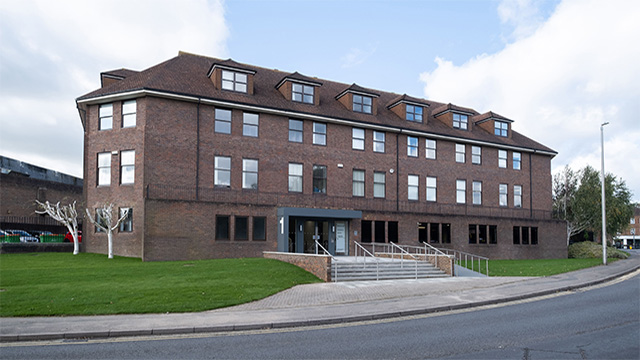Occupiers demand offices à la carte
COMMENT: A recent report by Cushman & Wakefield caught my eye. It said that flexible workspace providers took more than 21% of central London office space in 2017, and accounted for four of the top 10 biggest takers of space in the past five years, writes Tim Roberts, head of offices at British Land.
C&W asked the question on everyone’s lips: what does this mean for traditional office space, and has the flexible office market reached saturation point?
I agree that flexibility, improved service and the working environment are crucial, but that doesn’t mean that flexible workspace or co-working space are the only answers for office occupiers.
COMMENT: A recent report by Cushman & Wakefield caught my eye. It said that flexible workspace providers took more than 21% of central London office space in 2017, and accounted for four of the top 10 biggest takers of space in the past five years, writes Tim Roberts, head of offices at British Land.
C&W asked the question on everyone’s lips: what does this mean for traditional office space, and has the flexible office market reached saturation point?
I agree that flexibility, improved service and the working environment are crucial, but that doesn’t mean that flexible workspace or co-working space are the only answers for office occupiers.
The picture is more complex than this, which is why at British Land we are concentrating on promoting a variety of workspace options, amenities and services on our campuses at Broadgate, Paddington Central and Regent’s Place – including Storey, our flexible workspace brand, which is celebrating its first birthday this week.
At Broadgate we recently signed a 20-year lease with Sumitomo Mitsui Banking Corporation Europe for 161,000 sq ft of new offices at our 100 Liverpool Street development.
Indeed, it would have been difficult for us to speculatively commence work on a development of this scale (520,000 sq ft) without the prospect of the likes of Sumitomo Mitsui making a long-term commitment.
And last November global brand, media and communications specialist Dentsu Aegis Network signed a 20-year lease for 310,000 sq ft of offices at Regent’s Place, building on the 118,000 sq ft it already occupies at the campus.
So who is right?
On one crucial point we agree with many others in the central London office market right now: conditions are far healthier than we could have predicted in the weeks after the UK’s decision to leave the European Union in June 2016.
The list of companies that have committed to London since then is huge: Deutsche Bank, Goldman Sachs, Royal Bank of Canada, Fidelity, the Financial Times, Wells Fargo, ICAP and Schroders – as well as new City of London arrivals such as Saatchi & Saatchi and Deliveroo.
And it is these new arrivals in the City – including Mimecast, which has signed a 15-year lease for more than 80,000 sq ft at Broadgate’s 1FA, and Starling Bank and Innovate Finance at 2FA – that are helping to rejuvenate the central London office market.
But where I differ from other commentators is in saying we have reached a “tipping point” in favour of flexible offices.
What is actually happening is that office customers want to pick from a “soup to nuts” full menu to help deliver growth for their businesses, with three core models at its heart.
First is the long lease, which many customers request for their own good as much as the landlord’s.
Talent attraction and retention is everything in London today, and by investing in the long term for their people, companies are now making a statement to their staff through their corporate homes.
Having done that, they won’t want to move out quickly, or be vulnerable to their landlord removing them at the expiry of their lease for another company.
The second – and increasingly popular – model in play now is the “core-plus flex” lease, through which a company leases, for example, 100,000 sq ft with the option to expand into another 50,000 sq ft should the right conditions arise.
Exactly one year ago, we launched Storey, our flexible workspace brand. One of its first customers was Kingfisher, which leased 25,000 sq ft of core-plus flex space at Broadgate, having been a long-established occupier at Paddington Central as well. And existing Regent’s Place occupier Lendlease has taken additional space at Storey in the campus’s 338 Euston Road site.
The third popular model is the flexible lease. Through Storey we have now signed fast-growing customers such as pioneering robotic software company Blue Prism, Small Business of the Year Rotageek and highly regarded connectivity specialist WiredScore.
Increasingly we are seeing that offices and the workplace in 2018 aren’t about types of lease or models of agreement. They are about ensuring that real estate is increasingly seen as a service and about curating the office environment itself – within a wider mixed-use place for people to enjoy, with a range of amenities, shared facilities and events.
The best flexible office cannot thrive in the middle of nowhere – we saw that with desolate serviced offices in business parks in the 1990s – and nor can an opulent office building prosper today if it isn’t designed with the millennial workforce in mind.
Great buildings, great workplaces and great locations created with people in mind will prosper throughout the 2020s with a mix of long, core-plus flex and flexible leases continuing across the board. Indeed, our customers tell us they like the idea of one provider for this spectrum of space requirements.
We have seen this with demand from a diverse mix of new and existing occupiers to the different types of office space we offer across our campuses. Don’t just listen to me – ask the world’s office occupiers, small, medium and global.











